I have been thinking a lot about the 2021 New Year’s celebrations. By all rights we should be very excited to start a new year. However, as much as we would like to put an end to all of our 2020 issues, just because the date changed did not mean the problems stopped. I have been through a lot of New Year’s Days and to be quite honest they were a lot of fun celebrating but they did not change a great deal of anything in the short term.

I am not trying to be doom and gloom here, but what I am trying to say is that we need to understand our challenges and plan a strategy for going forward. I have been working in business since I was 12 years old and one thing I can say for sure is that struggles are never over. It would be nice to say, but it is the nature of a successful business that there is always something to work on. To be honest with you, if we are ever to grow, change and evolve we must realize that our goal must be to always improve. Stagnation is our enemy. Over the years I have been in many veterinary hospitals and had discussions with team members too numerous to count. Typically, the ones who bring me in as a consultant are the ones who are never satisfied with the status quo. I really love that! Dissatisfaction means that we are constantly working towards BETTER. The practices that struggle now, struggled in the past and will continue to struggle are the ones who want everything to remain the same… as long as they stay in business. Instead of investing time in development, they continue to contend with the “devil they know”. They are then disappointed when it comes time to retire and they have nothing of value to sell and it is too late to fix it.
I am personally a fan of disruption. It can be exhausting there is no doubt and 2020 certainly went overboard with disorder, trouble and commotion. But only through disruptions can we improve and eventually manifest greatness. In order to start building we need a firm foundation. Sometimes “scientific minded” practice owners do not want to do the touchy-feely work that is required to build a Mission, Vision and Values statement that reaches the HEART. Often this is the hardest part of my consultation. Practice owners tend to want to get to the financial part, the pricing part, the inventory control part, and all those are very important. But Mission, Vision and Core Values are the benchmarks that you use to choose and guide your team. Only by choosing the correct people on your team can you implement good inventory control, over the top customer service, superior medical care and appropriate profitability.
In that light as we begin January 2021 I wanted to start this year’s blog series with a discussion of how to build a Mission Statement with meaning.
I have read a lot of mission statements in my work. They are typically similar because they say things like “our practice wants to give you good customer service and wants to provide great medicine”. All this is well and good but you have got to define how you plan to do those things.
When you review or write your mission statement you want to begin with- what do I want this business to be for the patients in my care? Perhaps you want it to be a high-end practice that follows the highest standards and maybe even has some specialty work. You want to bring the best of the best to your patients. That is a worthy mission. But there are other practices whose desire is to help as many patients as possible and to benefit those clients who cannot afford the gold standard. Both of these practices have a place in veterinary medicine. They also have a very different message that they should be sending to their audience.
The second leg of the mission statement is what do you want your practice to do for your team? In either of the above practice styles our goals should include offering a wonderful culture, a sustainable way of life, and economic security to our team members. Define what that looks like to your team.
The third leg of our mission statement is – what do we want our practice to be for our family? Sometimes practice owners forget that through ownership they are creating the financial means of support of their family. I often see practice owners as the worst culprits in giving away services to clients, sometimes to the ones who complain the loudest and deserve the least, while shortchanging their practice revenue, causing their family and team to not flourish.
The last leg of your mission statement should involve – what you want your hospital to be to your community. A veterinary practice should be a partner to its Community. It should strategically offer care to animals and humans in need by offering payment options like #VitusPay and assistance to shelters or charities. It should work to educate the community about the well-being of pets and their relationship with human health.
Finally, your mission statement should show your heart. A mission statement that is written in unemotional language will never grab the heart and soul of your team. If writing is not your strong suit there are certainly people, like me, who can help you. I think of #VitusVet’s mission based on Dr. Olcott’s experience as an ER vet. He lost a patient because he did not have access to the patient’s medical history from its general practitioner, so he decided to create a solution.
Your mission statement is your WHY. Why did you want to be a veterinarian? Why did you want to enter practice? Why do you walk in the door every single day? Why do your team members choose to work with you? These questions must be answered and agreed upon by all the people who work in your practice in order for you to have a culture and a practice that not only survives but flourishes in the new year and beyond.
If you need help developing your Mission please reach out to me at www.dboone2managevets.com
 by a veterinarian
by a veterinarian


